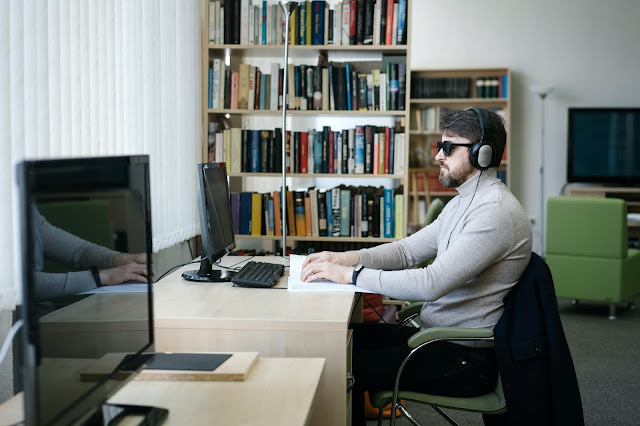 |
| Photo by Alexandre Pellaes on Unsplash |
As more and more conferences return to on-site mode, many feel the need to offer a hybrid mode where most of the event is also available to online participants. Is this just a symbolic gesture to show that we have learned something from the pandemic? How involved are the online participants and how do organisers charge for the online experience? How do we facilitate true interaction between the two groups of participants? Most importantly I think is the question of whether hybrid is the way forward of just an awkward and technically demanding add-on.
Attending an online conference is very different from actually being there for many reasons. I have found that I sign up for more online conferences than I would ever attend physically but when I'm online I only attend the interesting parts and skip the rest. In some sessions I listen with one ear and continue with other work. I attend but I don't really engage. I am still at work and the conference becomes like background music with a few highlights when I fully concentrate on it. Maybe similar things happen with hybrid teaching. It would be interesting to study the distraction levels of campus and online students.
But maybe the answer is not to try and cater for everyone but focus on your target group. If the whole point of the event is for people to meet and discuss on-site then make that clear and restrict it to on-site delivery. However if an on-site event would automatically exclude important members of the target group then make the event fully online or even asynchronous. By trying to include everyone you risk excluding everyone and the event becomes a messy compromise.
I started thinking about these questions after reading an article by Mark Carrigan on the LSE blog, Is hybrid a desirable ‘new normal’ for academic events? The problems with hybrid are well known in terms of technical complexity and the risk of online participants being flies on the wall, passive observers. If you want an online audience then focus on that and don't try to do two things at the same time. Conferences can instead become processes with asynchronous online interaction over a whole week or several weeks.
The equipment and expertise which are currently necessary to run a hybrid event mean it probably isn’t the right (or sustainable) choice for a relatively niche event that is unlikely to attract much of an online audience. In which case it might make more sense to have a physical event, with a collective output which can be distributed asynchronously. Digital artefacts like blogposts and podcasts have a tendency to circulate far beyond their original creators. The raw fact of access can be valuable, but the careful packaging of ideas and discussions can be a much more effective way of facilitating remote participation. It might be that only a small number of people would tune in synchronously to engage with an event, but a digital output from that event over time might assemble a significantly larger audience.
It's similar with hybrid teaching. Some sessions must be on campus and therefore we need to make that clear well in advance. Other sessions can be online only and even campus students will join the session from their own laptops. Maybe some sessions can be hybrid but we need to work hard to make them truly inclusive and collaborative. Hybrid sounds like the best of both worlds but can so easily be messy and a disappointment for all. The solution is to decide on the best format for the group you want to be involved. There is no default in the future - decide the optimal format each time.
This isn’t an argument against physical meetings, but rather a plea that we avoid drifting back to them. The familiar rhythms of seminars and conferences feel intensely alluring after the isolation and suffering which have characterised the last eighteen months. However, do we really want to return to a situation where they are the default? Or could we imagine an approach to academic events which recognises how these options (face-to-face, hybrid, digital) are equally worthwhile depending on what we’re trying to achieve?


